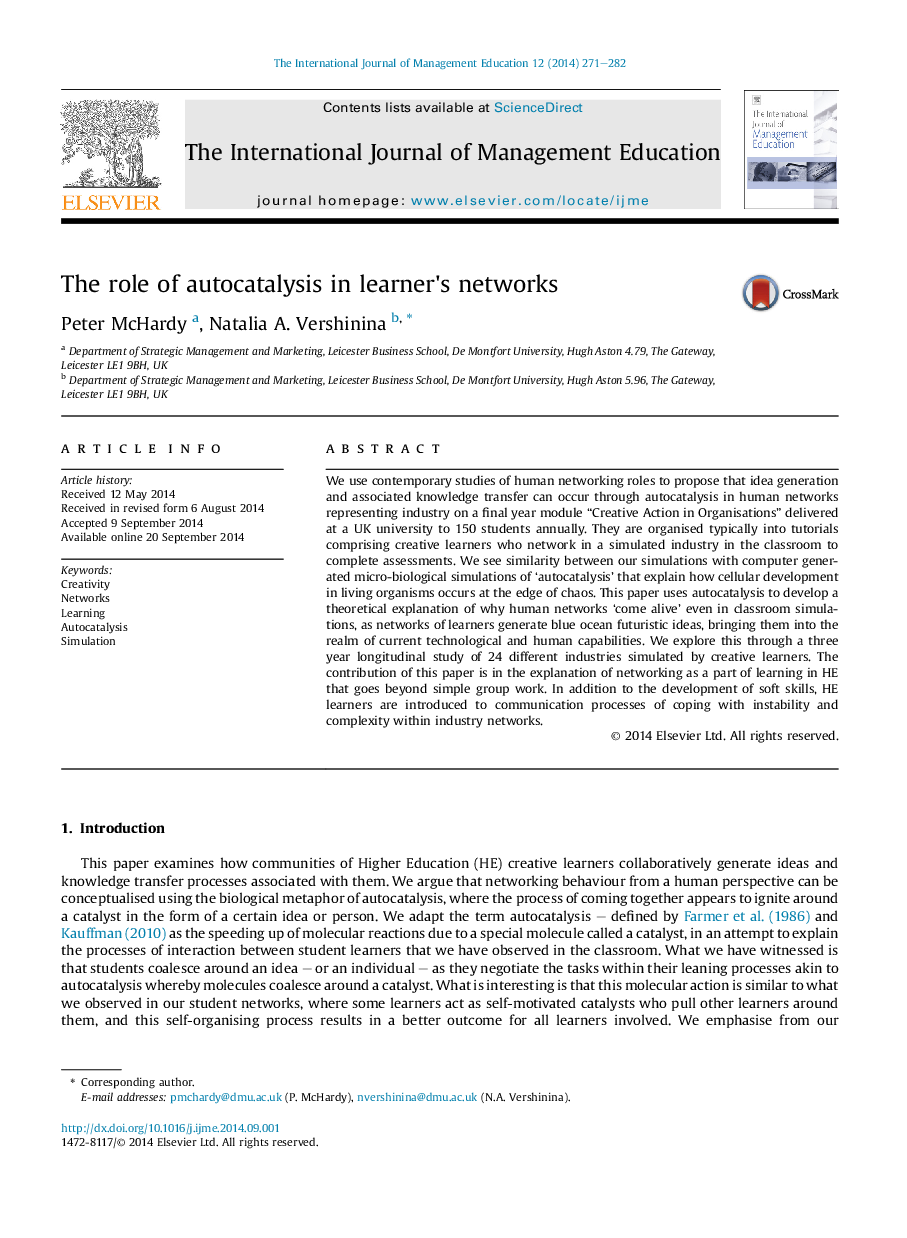| Article ID | Journal | Published Year | Pages | File Type |
|---|---|---|---|---|
| 357384 | The International Journal of Management Education | 2014 | 12 Pages |
•We propose that idea generation and knowledge transfer occurs via autocatalysis.•The paper shows similarity between student behaviour and biological simulations of ‘autocatalysis’.•We show that networking in HE goes beyond group work.•We show how students develop soft skills by coping with instability and complexity.
We use contemporary studies of human networking roles to propose that idea generation and associated knowledge transfer can occur through autocatalysis in human networks representing industry on a final year module “Creative Action in Organisations” delivered at a UK university to 150 students annually. They are organised typically into tutorials comprising creative learners who network in a simulated industry in the classroom to complete assessments. We see similarity between our simulations with computer generated micro-biological simulations of ‘autocatalysis’ that explain how cellular development in living organisms occurs at the edge of chaos. This paper uses autocatalysis to develop a theoretical explanation of why human networks ‘come alive’ even in classroom simulations, as networks of learners generate blue ocean futuristic ideas, bringing them into the realm of current technological and human capabilities. We explore this through a three year longitudinal study of 24 different industries simulated by creative learners. The contribution of this paper is in the explanation of networking as a part of learning in HE that goes beyond simple group work. In addition to the development of soft skills, HE learners are introduced to communication processes of coping with instability and complexity within industry networks.
